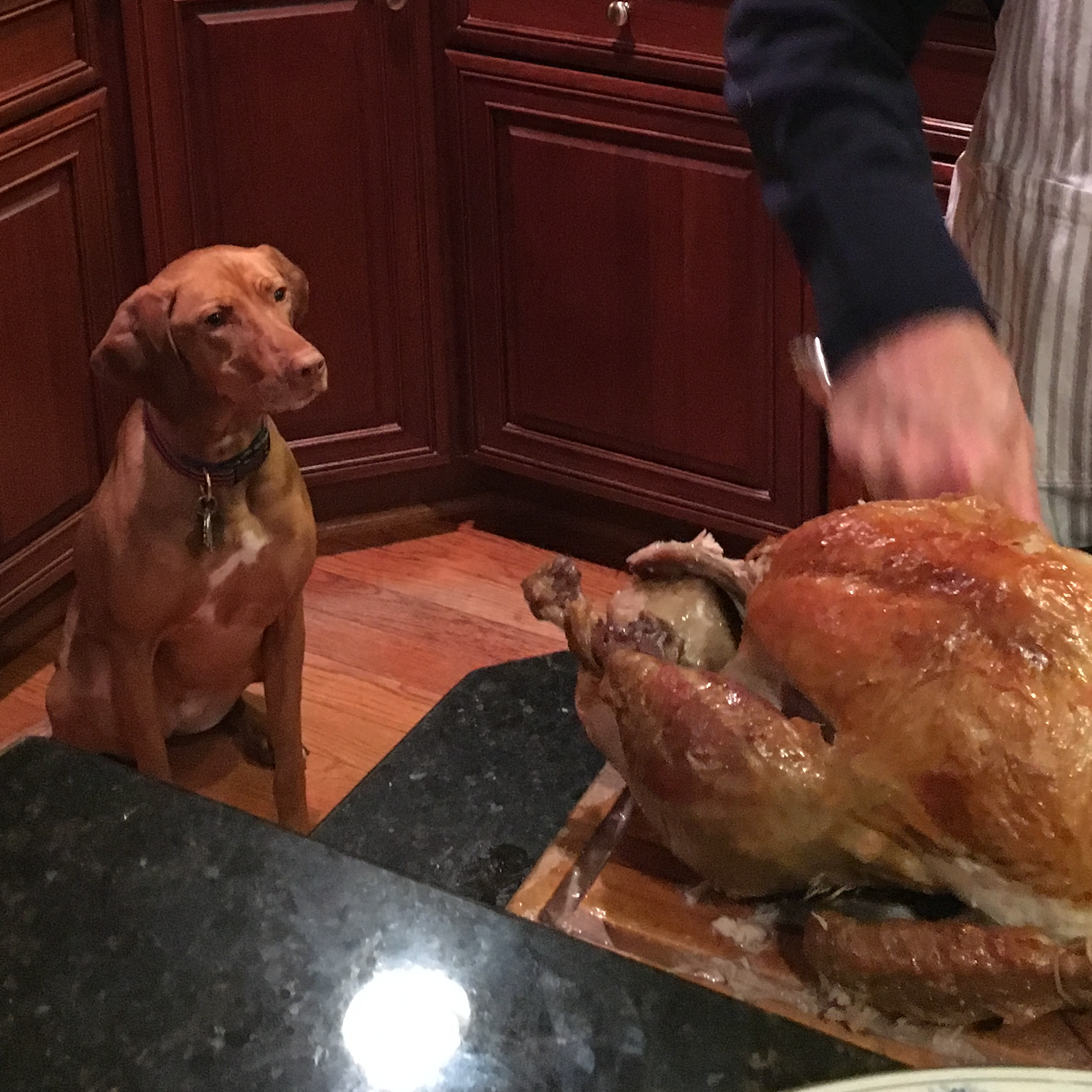Well MET, Fido!
Is Your Dog “Well MET” This Holiday?
I come from a long line of British ancestors and growing up had a fondness for older holiday customs. In particular a phrase in greeting, “well met visitors!” was very appealing. The concept of having been met well, is a powerful image that has stuck with me.
With apologies to my forbears, I’d like to appropriate the phrase to talk about how we can help our dogs be well M.E.T. this holiday season. The arrival of visitors, friends and family gathered around festive tables, and toddlers and kids running amok, is a delight for some dogs, and a nightmare for others.
Let’s look at the word “met”. Treated as an acronym, it reminds us to help our dogs by managing, explaining, and training.
MANAGE
When we manage, we set up the environment and situation to prevent our dogs being exposed to things that they cannot handle. Rather than letting them get in over their heads and then punishing them for undesirable behavior, we set up the situation to keep them in the success zone – a physical and mental place where they will be able and likely to do what we want.
For a small dog living with quiet grandparents, for example, careening children might be more than she can handle. On the other hand your adolescent lab may find it so exciting that he goes over-the-top jumping, mouthing, and generally creating mayhem. We could manage a visit from the grandkids by keeping Fearful Fluffy on the other side of a baby gate or exercise pen when the kids are tearing around the house, and when they've burnt off some energy, overseeing carefully-choreographed games such as "find it" or "fetch", or clicker trick training. For more exuberant Mauling Maxwell we would use the same baby gates or ex-pens to prevent his being able to jump on and mouth the grandkids while overseeing games played with the gate or pen between kids and dog.
EXPLAIN
When we explain, we help our guests to understand the happiest ways to interact with our dogs. Perhaps Muffy doesn't like to be petted on top of her head, but loves to work for food. We explain to our guests that head patting will make her unhappy, and possibly feeling that she must defend herself from this unwanted contact. We then explain that asking her for her favorite trick, and giving her treats that we have on hand will spark an easy wag or doggy smile. Does Nelly Nipper snap at clothes, hands, or feet if children run? We explain that when Nelly is out of her cage or in the backyard they need to walk quietly.
We also explain to our dogs what behavior we’d prefer, by rewarding generously for a desirable performance, such as resting in a designated “parking zone” while we’re preparing food up on those tantalizing counters. We'd toss especially tasty treats into the zone, or have a helper do so, and could get into a great rhythm such as stir … stir … toss treat … slice … dice … toss treat. As Sammy Surfer realizes that he will get nothing from the counters, but that treats magically appear in his parking zone he will increasingly choose to park himself.
TRAIN
Finally, before the Big Day that visitors are to descend on the household, or festive meals are to be prepared, or the excitement of wrapping and opening gifts are too much to bear, we want to train some really useful behaviors, such as “Go to Place”, “Settle”, “Drop”, “Leave It”, and “Stay”, when nothing much is happening. Once our dog can perform the behavior in a quiet setting we ever so gradually raise the level of distraction, so that our pups learn little-by-little that they can keep their wits about them even when things become exciting.
ADDITIONAL RESOURCES
Manage
There are a number of excellent exercise pens and baby gates to help limit your dog's access to things that are just too challenging. Here's a link to the Amazon exercise pen search page.
 Explain
Explain
Providing a mat for your dog creates a clear visual reference for her "Parking Zone". You can use a bathmat, towel, or blanket, or you can buy a commercial dog mat, such as the Mutt Mat modeled by Joyful Dog's Flim Flam here.
Train
Here are links to some of our training handouts, to get you started building helpful behaviors:
- Teaching Drop
Teach your dog to happily drop things in her mouth. - Teaching an Interrupt
Get your dog to reorient to you. - Teaching A Stay
Have your dog remain in place. - Teaching Self Control with Food
This is the foundation for a great "Leave It".




